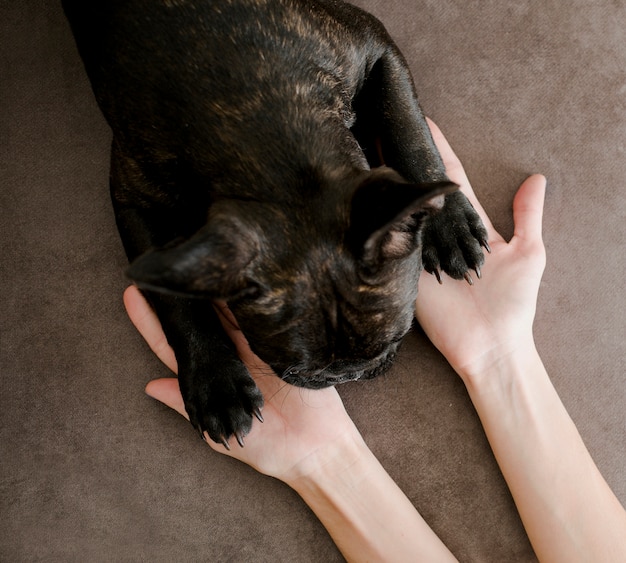When Should You Worry About Persistent Limping in Pets?


When Should You Worry About Persistent Limping in Pets?
Every pet parent knows the uneasy feeling that comes when your dog or cat suddenly starts limping or hesitates to walk. Whether your furry companion gives a quick yelp after a tumble or you simply notice a subtle favoring of one paw, it can be hard to know when to worry and when to wait. At Garbizo Animal Clinic, located at 4400 West Sample Road Suites 148, Coconut Creek, FL 33073, our compassionate veterinary team frequently helps pet owners navigate these concerns, offering tailored care that considers your pet’s unique needs.
In this blog, we’ll explore common pet limping causes, what persistent limping could mean for your dog or cat, and the crucial moments when you should schedule an appointment with a veterinarian near you. We will also discuss why early evaluation of pet limping in Coconut Creek and surrounding communities helps prevent more serious injury and supports your pet’s long-term wellbeing. If you’re searching for a “vet near me” who can provide a thorough assessment and personalized care, you’ve come to the right place. For those interested in a proactive approach, consider scheduling a wellness examination to catch subtle mobility issues before they worsen.
Recognizing the Signs: When Is Limping a Concern for Your Pet?
It’s not uncommon for pets to experience occasional stiffness or a temporary limp, especially after rambunctious play or an awkward jump. However, persistent limping in dogs and cats often signals an underlying issue that deserves attention. Pet owners may notice that their pet is hesitant to bear weight on one leg, avoids stairs, or becomes less enthusiastic about walks and playtime. Other symptoms that may accompany limping include swelling around a joint or paw, vocalizing when touched, licking or chewing at the affected limb, or an obvious change in gait. In some cases, pets may also show decreased appetite or seem more withdrawn due to discomfort.
Observing how long the limp lasts is crucial. If your pet’s limp persists for more than a day or two, or if it seems to worsen, it’s a sign that professional evaluation from a vet near you is warranted. Immediate veterinary attention is especially important if your pet is unable to stand, drags a limb, or shows signs of severe pain such as crying out or aggressive behavior when the limb is touched. Understanding these warning signs can help you act quickly and ensure your pet receives timely care.
Common Pet Limping Causes in Coconut Creek and Surrounding Communities
Limping can result from a wide range of causes, some mild and others more serious. In Coconut Creek, where active pets often enjoy outdoor adventures, the risk of minor injuries is always present. Common pet limping causes include simple muscle strains or sprains from overexertion, minor cuts or foreign objects lodged in the paw, and toenail injuries. In more severe cases, limping may stem from fractures, ligament tears such as an anterior cruciate ligament (ACL) rupture, or dislocations. Joint issues like arthritis, especially in older pets, often lead to a gradual onset of limping that may come and go.
For cats, limping is sometimes related to soft tissue injuries from jumping or climbing, while dogs are more prone to ligament injuries or luxating patellas. Young, growing pets may experience growth plate injuries, while certain breeds are predisposed to hip or knee problems. In rare cases, underlying disease such as bone infections or tumors can also cause limping. Given the wide range of possibilities, it’s always best to consult your local veterinary professionals in Coconut Creek for an accurate diagnosis.
If your pet is diagnosed with a joint injury or condition such as a torn ACL, our team can discuss advanced treatment options, including ACL repair surgery tailored to your pet’s needs. For those managing chronic joint issues, you may benefit from our arthritis management services, which are especially important for aging dogs and cats.
How Veterinarians Diagnose and Treat Limping in Pets
When you bring your pet to Garbizo Animal Clinic for limping, our veterinary team will begin with a thorough physical examination, focusing on the affected limb and evaluating your pet’s gait, joint flexibility, muscle tone, and overall comfort. Diagnostic tools such as digital radiology or ultrasounds may be recommended to identify fractures, dislocations, or soft tissue injuries. In some cases, advanced imaging or laboratory tests are needed to rule out infections or underlying diseases.
Treatment for pet limping in Coconut Creek depends on the underlying cause and can range from conservative home care to surgical intervention. For minor sprains or soft tissue injuries, rest and anti-inflammatory medications may be prescribed. Wound care is provided if a cut or puncture is present. Pets with ligament tears, such as a ruptured ACL or a dislocated kneecap, may require surgical repair. Our clinic offers specialized procedures such as knee cap dislocation surgery and orthopedic surgery services for more complex injuries.
Chronic conditions like arthritis are managed with a combination of medications, weight management, physical therapy, and sometimes cold laser therapy. In every case, our focus is on creating a tailored plan that maximizes comfort and mobility while minimizing long-term complications. If your pet’s limping stems from a sudden traumatic event, such as a fall or accident, prompt evaluation and possibly emergency surgery may be needed to prevent permanent damage.
At-Home Care and Prevention: Supporting Your Pet’s Mobility
While not every limp is cause for alarm, there are steps pet owners can take at home to support their pet’s recovery and prevent future injuries. Providing a soft, comfortable resting area and encouraging your pet to rest are important first steps. Limiting high-impact activities, such as jumping or running on hard surfaces, can reduce strain on healing tissues. For pets with arthritis or joint issues, maintaining a healthy weight and using joint supplements as recommended by your veterinarian can help preserve mobility.
Regular exercise tailored to your pet’s age and health status, along with routine nail trimming, helps prevent common causes of limping in dogs and cats. Inspecting your pet’s paws and limbs after walks or outdoor adventures can catch minor injuries before they worsen. Scheduling routine veterinary checkups, such as a wellness examination, is an excellent way to monitor your pet’s joint health and catch subtle changes early. Our veterinary team in Coconut Creek can also provide guidance on safe exercise routines and lifestyle adjustments to keep your pet active and comfortable.
When to See a Vet for Limping: Knowing the Right Time to Act
Deciding when to see a vet for limping can be challenging, but certain scenarios always warrant immediate attention. If your pet is unable to put any weight on a limb, if there is visible swelling or an abnormal angle to the leg, or if your pet is in obvious pain, do not delay in seeking veterinary care. Rapid-onset limping following trauma, such as a fall or collision, should be evaluated right away, as fractures or ligament tears require prompt intervention. Additionally, if limping is accompanied by fever, lethargy, or loss of appetite, underlying infection or systemic illness may be present.
Even if your pet’s limp seems minor, persistent or recurring lameness should never be ignored. Early intervention by a veterinarian near you can prevent minor injuries from developing into chronic conditions and ensure the best possible outcome for your pet. Our veterinary professionals at Garbizo Animal Clinic are equipped to diagnose and treat a wide range of orthopedic and soft tissue issues, helping pets in Coconut Creek and surrounding communities regain their mobility and comfort. If you’re unsure whether your pet’s limp requires a visit, our team is always happy to discuss your concerns and recommend the appropriate next steps.
Take Action for Your Pet’s Mobility: Trust Garbizo Animal Clinic
Persistent limping in pets is never something to take lightly. While some causes are minor, others can lead to lasting discomfort or more severe health issues if left untreated. By recognizing the signs of limping, understanding common pet limping causes in Coconut Creek, and knowing when to see a vet for limping, you can help your furry friend stay happy, active, and pain-free.
If you’ve noticed your pet limping or showing signs of joint discomfort, we encourage you to schedule an appointment with our veterinary team at Garbizo Animal Clinic. Our goal is to provide the highest standard of care for every patient, whether that means a wellness examination, advanced orthopedic surgery services, or ongoing arthritis management. For compassionate, quality vet near me services, call (954) 974-1136 or visit us at 4400 West Sample Road Suites 148, Coconut Creek, FL 33073.
Your pet’s comfort and health are our top priorities, and our veterinary professionals are here to guide you every step of the way. Don’t wait for a minor limp to become a bigger problem; schedule your visit today and let us help your pet get back to their best self. If you have questions about pet limping causes or need advice about when to see a vet for limping in Coconut Creek, reach out to our team for expert guidance and support.
The information in this blog is intended for educational purposes only and does not replace the need for professional veterinary care. Always consult with your veterinarian for diagnosis and treatment tailored to your pet’s specific situation. For more information on pet mobility issues, visit resources such as the American Veterinary Medical Association (https://www.avma.org/) or the Cornell University College of Veterinary Medicine (https://www.vet.cornell.edu/).


















